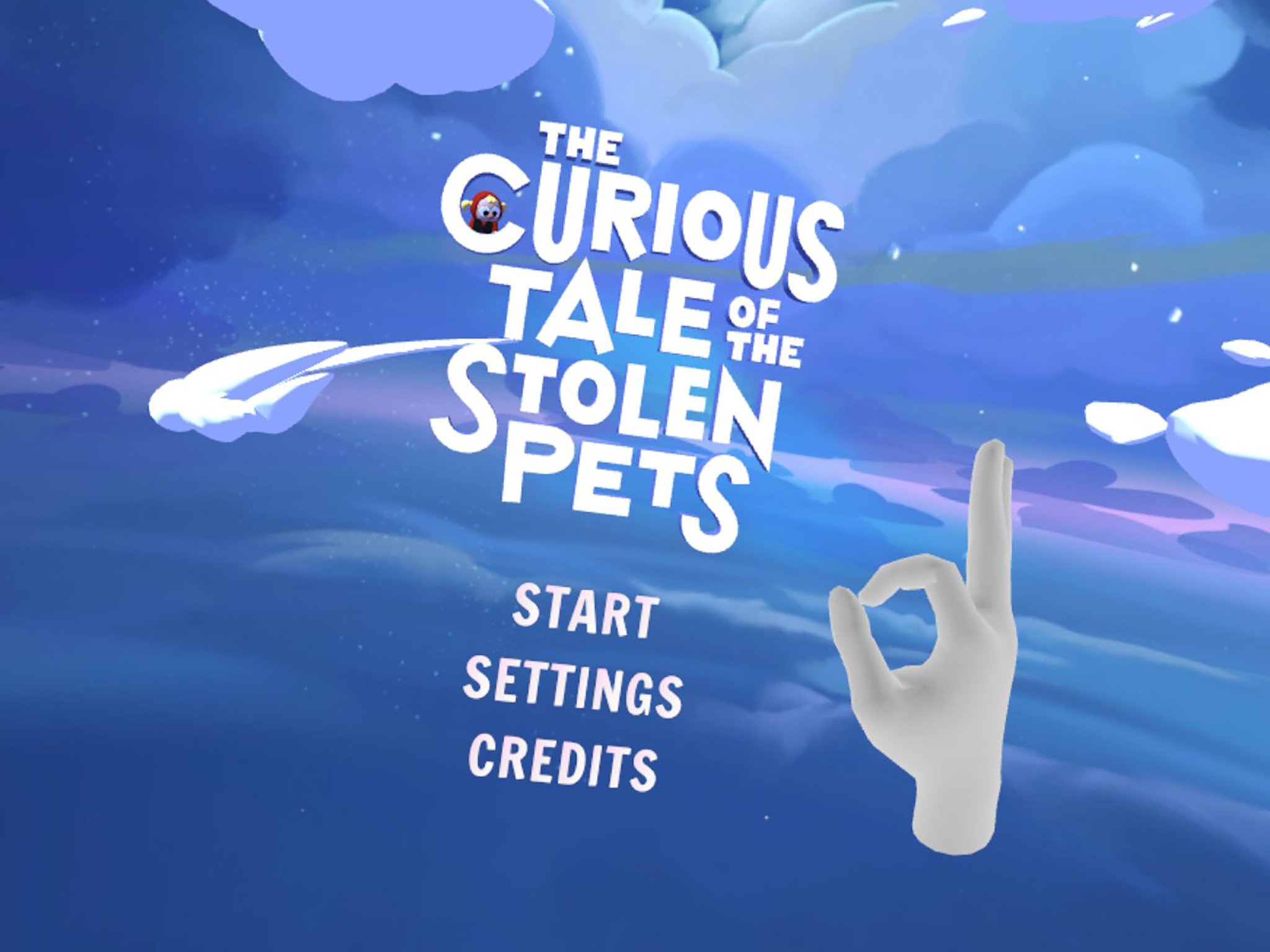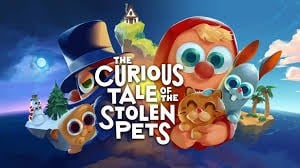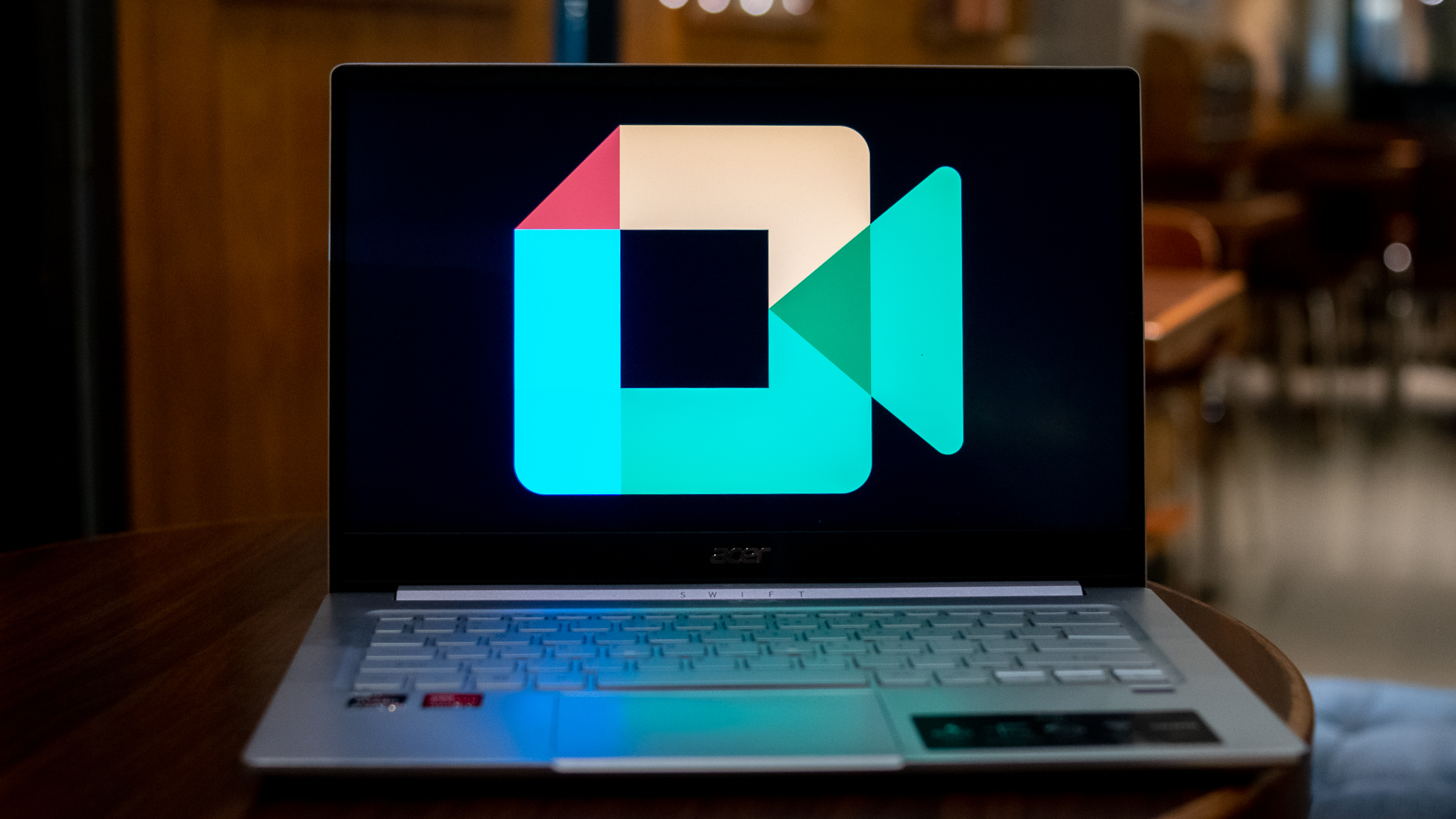The Curious Tale of the Stolen Pets debuted near the end of 2019 on the Oculus Quest and PC VR platforms. The diorama-scale virtual worlds found in the game present a perfect way for players of all ages to appreciate the magic that VR brings. It truly feels like these miniature worlds are floating right in front of you, and their designs compel players to look around every corner and in every nook and cranny to find all the stolen pets and hidden secrets.
Developer Fast Travel Games is among the first elite group of developers to release a hand tracking update for the Oculus Quest version of their existing game, bringing an entirely new dimension of magic to the experience. Hand tracking is particularly impressive and important for a game like The Curious Tale of the Stolen Pets because the world already begs for you to reach out and touch it. It's also one of the most accessible VR experiences on the market, as it'll scale the worlds according to player height automatically, features charming and lovable characters, and puzzles that are simple enough even for the littlest among us.
Flattening the learning curve
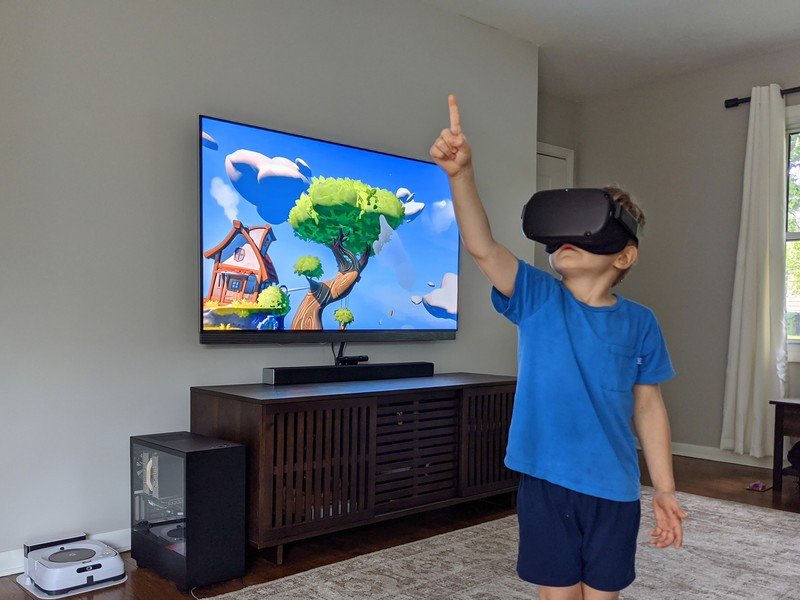
The Curious Tale of the Stolen Pets already gets kudos for being incredibly accessible, but removing the basic need to have controllers simply to play the game puts it on another plane entirely. Controllers, no matter how naturally or ergonomically designed they are, represent a stepping stone that some people simply aren't willing to overcome. While Curious Tale doesn't feature complex gameplay that would require finger gymnastics on a controller, many other games do, and it's this association that could be enough of a deterrent for those players.
there's something transcendent about using your God-given hands to interact with an object
But there's something transcendent about using your God-given hands to interact with an object, be it a physical or virtual one, and that's what makes hand tracking so special. While controllers can help mimic hands in a game, your hands don't need to since, well, they're already hands. When you put on your Oculus Quest, all you need to do is reach out and touch the Curious Tale logo on the Oculus Home screen to launch the game. From there, everything just feels natural.
The fundamental gameplay of The Curious Tale of the Stolen Pets doesn't change at all, which is particularly great for anyone new to the title. The basic concept revolves around taking a trip down memory lane with your grandfather and sort of reimagining the ways you would play and pretend together. Each imaginary world looks like a large diorama floating right in front of you, and you can walk all the way around, spin the island, and check out every nook and cranny there is to see.
In all, you'll find several dozen pets hidden around each world, some hidden within a puzzle that needs to be solved first, while others just require a game of hide-and-seek. No one puzzle is usually terribly difficult to solve, but some of them will certainly get your noodle cooking and may require the input of another person in the room. I found it wonderful to help my 6-year old son play through the game and only give him hints when needed.
Most objects in the game can be interacted with via a single tap, which lends itself perfectly to a single finger. It felt simply magical to be touching the world in a way that felt real, with my actual fingers. The controller in the game is otherwise represented by a dandelion ball which, although whimsical, isn't nearly as effective or believable as your own hands.
Get the latest news from Android Central, your trusted companion in the world of Android
What's particularly impressive about Fast Travel Games' implementation of hand tracking is the sheer accuracy and consistency of it. Up until now, hand tracking has been incredibly flaky and wholly unreliable. It's been a concept that's fun to play around with but almost impossible to take seriously in practice. Somehow, the wizards at Fast Travel Games not only got hand tracking to work more consistently than I've ever had the pleasure of experiencing before (and I've tried a lot of hand tracking titles), but it also works better than I've ever seen before.
Up until now, hand tracking has been incredibly flaky and wholly unreliable.
When you grab something in the game, it actually does a fantastic job of tricking the brain into thinking you're actually picking up an object. Sure, there's no weight or haptics going on when this happens, which certainly suspends reality a bit, and your hand will occasionally glitch out in the game, but it's by far the best implementation I've ever seen. It somehow even works on my 6-year-old son's tiny hands, while every other hand tracking game I've ever had him try simply doesn't understand how human hands could possibly be so small.
Six of one, half a dozen of the other
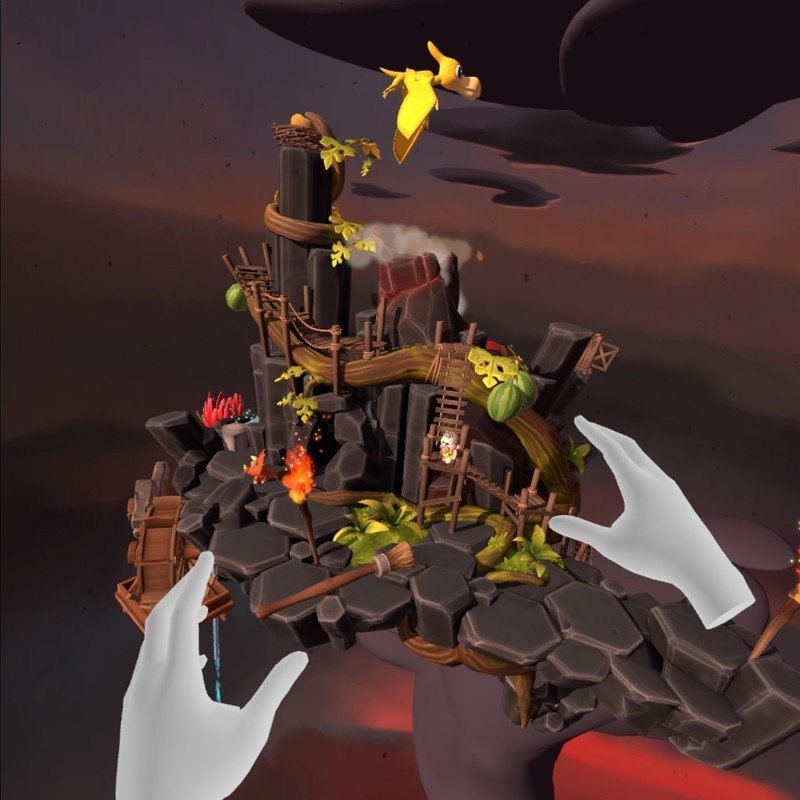
With all the positives that hand tracking brings, particularly the advantage for folks who are less thrilled with using controllers, it's nowhere near a perfect technology just yet. As you'll experience in any title that supports hand tracking, your hands will intermittently disappear from the game and, seemingly randomly, appear again as though they've always been there. Without any precise electronic method of tracking your hands, as the Oculus Touch controllers contain, the cameras on the Oculus Quest do have a bit of difficulty keeping up with fast hand movements.
you'll need to be careful when making fast movements or split-second decisions, as the Quest could easily lose track of your hands for a moment.
As such, you'll need to be careful when making fast movements or split-second decisions, as the Quest could easily lose track of your hands for a moment. Thankfully, Curious Tale is not typically a fast-paced game and doesn't require such decisions. There is one moment that stands out as a bit different from the rest in the game though: snowball catching.
In the second level, a Winter Wonderland-esque world, one puzzle requires players to catch three snowballs and assemble them into a snowman. I found this puzzle to be a tad difficult when using controllers in my first playthrough for the review back in December. It's far, far more difficult with hand tracking, though, as grabbing the snowball in a quick and precise fashion was extremely difficult.
My son gave up entirely and was audibly frustrated when he asked for the controllers "for this part". That was definitely a setback, but it was the only time that I felt I truly needed controllers to get anything done. Even then, I still caught the snowball with my hands with a bit of perseverance.
Aside from that, the only real pain point revolved around the revolution of the diorama worlds that make up the game. In Curious Tale, you have the choice of grabbing each world and spinning it like it were on a Lazy Susan, or just walking around the world as if it were floating in front of you in the middle of your playspace. It's a good thing this second option is available, because grabbing the world and spinning it is a chore and a half with hand tracking.
Part of the problem is the so-so detection of when you're actually trying to grab the world and spin it. Several times while just playing the game, I found the world was twitching ever-so-slightly because it thought I might be trying to grab the whole thing instead of a single object. These oddities are annoying but can be overlooked. However, the difficulty of turning the world with hands is definitely a frustrating affair.
An overall better experience
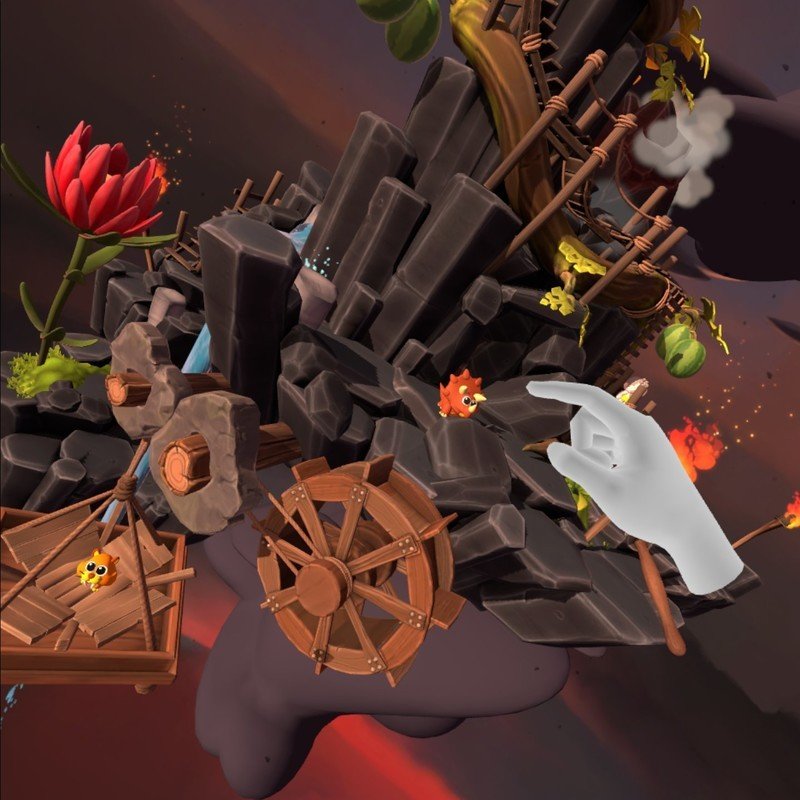
While every part of the experience isn't necessarily a better one, the final outcome is more than the sum of its parts. The Curious Tale of the Stolen Pets is a perfect example of the type of game where hand tracking makes a big, positive impact on the gameplay. It makes an already accessible game even more accessible, no matter what age or how small your hands might be, and it also makes playing Curious Tale a nearly-effortless endeavor. The future of hand tracking is a bright one, and Curious Tale is an amazing example of how well this kind of tech can be put to use.

